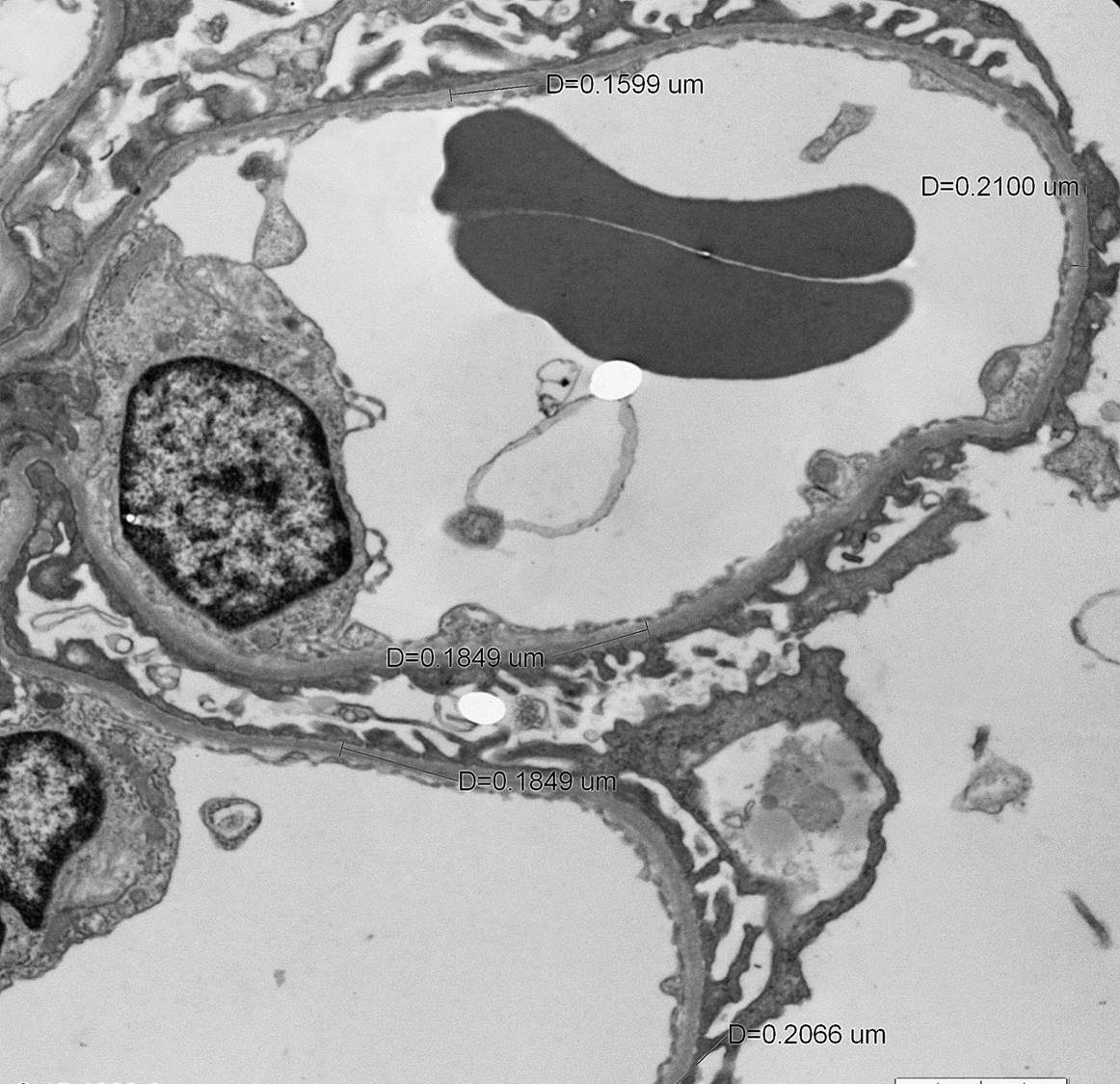Minor Degree of Persistent Microscopic Hematuria in Potential Living Kidney Donors Is Associated with Pathology.
1Medicine, Division of Nephrology, University of Alabama at Birmingham, Birmingham
2Surgery, University of Alabama at Birmingham, Birmingham
Meeting: 2017 American Transplant Congress
Abstract number: A237
Keywords: Biopsy, Donation, Kidney, Urinalysis
Session Information
Session Name: Poster Session A: Living Donor Kidney Transplant I
Session Type: Poster Session
Date: Saturday, April 29, 2017
Session Time: 5:30pm-7:30pm
 Presentation Time: 5:30pm-7:30pm
Presentation Time: 5:30pm-7:30pm
Location: Hall D1
Purpose: A threshold of ≥3 rbc/hpf (red blood cells/high power field) or higher prompts additional testing when evaluating potential living kidney donors at most centers in the United States. In our experience, a lower degree of hematuria has yielded pathology that precluded kidney donation.
Methods: We prospectively identified isolated asymptomatic microscopic hematuria in 19 out of 1124 potential living kidney donors. Microscopic hematuria was defined as presence of ≥1 rbc/hpf and persistent by presence on ≥2 separate urinalysis. Isolated was defined as presence of microscopic hematuria only with preserved GFR, absence of proteinuria, microalbuminuria or hypertension and no identifiable anatomical cause on native kidney imaging. Donors expressing continued interest had an evaluation with a cystoscopy. If unrevealing, they underwent a native kidney biopsy analyzed by a single pathologist using light, immunofluorescence and electron microscopy.
Results: There were no biopsy related complications. Degree of hematuria was modest ranging from 0-2 upto 3-10 rbc/hpf. Higher degree of hematuria was not isolated. 3/19 had IgA nephropathy and were not approved for kidney donation. 1/19 had arteriosclerosis. Thin basement membrane disease (GBM) diagnosed after ruling out Alports was the most common finding in 11/19 patients and 4/19 had possible thin GBM. These 15/19 were given a choice to donate after extensive counseling.
Conclusions: Persistent asymptomatic microscopic hematuria of very minor degree can be associated with pathologic findings that can preclude kidney donation. A higher threshold can lead to missed diagnosis. At our center we have lowered our definition to ≥1 rbc/hpf after the results of this analysis.

CITATION INFORMATION: Kumar V, Saha M, Locke J, Gaston R, Hanaway M. Minor Degree of Persistent Microscopic Hematuria in Potential Living Kidney Donors Is Associated with Pathology. Am J Transplant. 2017;17 (suppl 3).
To cite this abstract in AMA style:
Kumar V, Saha M, Locke J, Gaston R, Hanaway M. Minor Degree of Persistent Microscopic Hematuria in Potential Living Kidney Donors Is Associated with Pathology. [abstract]. Am J Transplant. 2017; 17 (suppl 3). https://atcmeetingabstracts.com/abstract/minor-degree-of-persistent-microscopic-hematuria-in-potential-living-kidney-donors-is-associated-with-pathology/. Accessed November 9, 2025.« Back to 2017 American Transplant Congress
